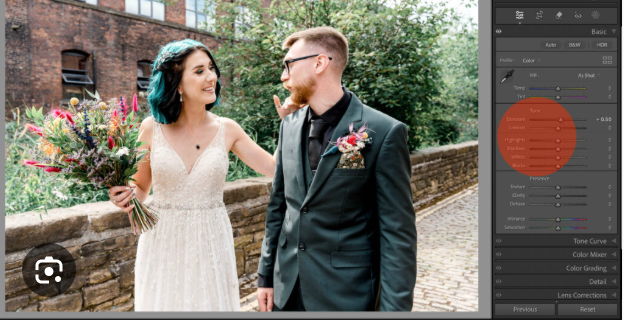Need Photo Editing? Your Complete Guide to Professional Image Enhancement

Every photographer, content creator, and business owner reaches the same realization: raw photos rarely tell the complete story. Whether you're launching a new product, building your portfolio, or creating content for social media, the moment you think "I need photo editing" is the moment your visual storytelling truly begins.
Photo editing transforms ordinary images into compelling visual narratives. It's the difference between a snapshot and a masterpiece, between content that gets scrolled past and content that stops viewers in their tracks. But knowing you need photo editing and understanding how to approach it effectively are two different challenges entirely.
This guide will walk you through everything you need to know about photo editing—from recognizing when your images need enhancement to choosing the right editing approach for your specific goals.
Signs You Need Photo Editing Services
Recognizing when your photos require professional attention isn't always obvious. Here are the clearest indicators that your images would benefit from editing expertise:
Poor Lighting Conditions
Photos taken in challenging lighting situations often need significant enhancement. Indoor shots with harsh fluorescent lighting, outdoor photos with unflattering shadows, or images captured during the wrong time of day can all be salvaged with proper editing techniques.
Color Issues
When colors appear washed out, overly saturated, or completely inaccurate, photo editing becomes essential. This is particularly common with product photography, where accurate color representation directly impacts purchasing decisions.
Composition Problems
Sometimes the perfect shot has minor flaws—a distracting background element, slightly crooked horizon lines, or unwanted objects in the frame. Professional editing can address these issues without requiring a complete reshoot.
Professional Requirements
If you're using images for business purposes, marketing materials, or professional portfolios, editing ensures your visuals meet industry standards and accurately represent your brand's quality.
Types of Photo Editing You Might Need
Understanding different editing categories helps you communicate your needs more effectively and choose the right service provider.
Basic Adjustments
These fundamental edits address exposure, contrast, brightness, and color balance. Basic adjustments form the foundation of most editing work and can dramatically improve image quality with relatively simple techniques.
Advanced Retouching
This involves more complex work like removing unwanted objects, skin retouching for portraits, or extensive color grading. Advanced retouching requires sophisticated skills and software proficiency.
Specialized Editing
Certain industries require specific editing approaches. Real estate photos need HDR processing and perspective corrections, while e-commerce images require consistent backgrounds and color accuracy.
Creative Enhancement
This category includes artistic effects, dramatic color grading, composite creation, and other creative treatments that go beyond basic correction to create a specific mood or style.
DIY Photo Editing vs Professional Services
The decision between handling editing yourself or hiring professionals depends on several factors that go beyond just budget considerations.
When DIY Makes Sense
If you have time to learn, enjoy the creative process, and work with a manageable volume of images, DIY editing can be rewarding. Modern software has made basic adjustments more accessible than ever, and online tutorials provide extensive learning resources.
However, DIY editing requires significant time investment. Learning professional-grade software takes months or years to master, and even basic edits can consume hours when you're starting out.
When to Hire Professionals
Professional editing services make sense when you need consistent, high-quality results quickly. If you're running a business, the time you save by outsourcing editing can be redirected toward revenue-generating activities.
Professionals also bring expertise that's difficult to replicate quickly. They understand color theory, have experience with various image types, and can achieve results that might take amateur editors significantly longer to accomplish.
Choosing the Right Photo Editing Solution
Selecting the appropriate editing approach requires evaluating your specific needs, timeline, and quality requirements.
Assess Your Volume
Consider how many images you need edited regularly. High-volume needs often justify the cost of professional services, while occasional editing might be manageable in-house.
Define Your Quality Standards
Be honest about the quality level your projects require. Social media posts might need different treatment than images for print advertising or professional portfolios.
Consider Your Timeline
Rush projects almost always require professional services. If you need photo editing completed quickly while maintaining high standards, professionals have the tools and experience to deliver efficiently.
Budget Appropriately
Factor editing costs into your overall project budget from the beginning. Last-minute editing needs often cost more and may compromise other aspects of your project timeline.
Getting the Best Results from Photo Editing Services
Maximizing the value of professional editing services requires clear communication and proper preparation.
Provide Clear Direction
Specify your intended use for the images, any style preferences, and particular requirements. The more context you provide, the better editors can tailor their work to your needs.
Share Reference Images
If you have a particular look in mind, provide examples. Visual references eliminate guesswork and ensure editors understand your vision.
Organize Your Files
Properly named, organized files save time and reduce errors. Include any relevant information about shooting conditions or specific challenges the images might present.
Allow Appropriate Timelines
Quality editing takes time. Rushing the process often compromises results, so plan your projects with realistic editing timelines in mind.
Making Photo Editing Work for Your Goals
Whether you choose DIY editing or professional services, success comes from understanding how editing fits into your broader objectives. Great photo editing enhances your message without overwhelming it, supports your brand identity, and helps your content achieve its intended purpose.
The key is recognizing that needing photo editing isn't a shortcoming—it's a professional acknowledgment that visual quality matters. Every image you share represents your standards, whether you're building a personal brand, marketing a business, or creating content that resonates with your audience.
Start by evaluating your current images honestly. Identify areas where enhancement could make a meaningful difference, then choose the editing approach that aligns with your resources, timeline, and quality requirements. Your visual storytelling will become more compelling, your content more engaging, and your professional image more polished.






